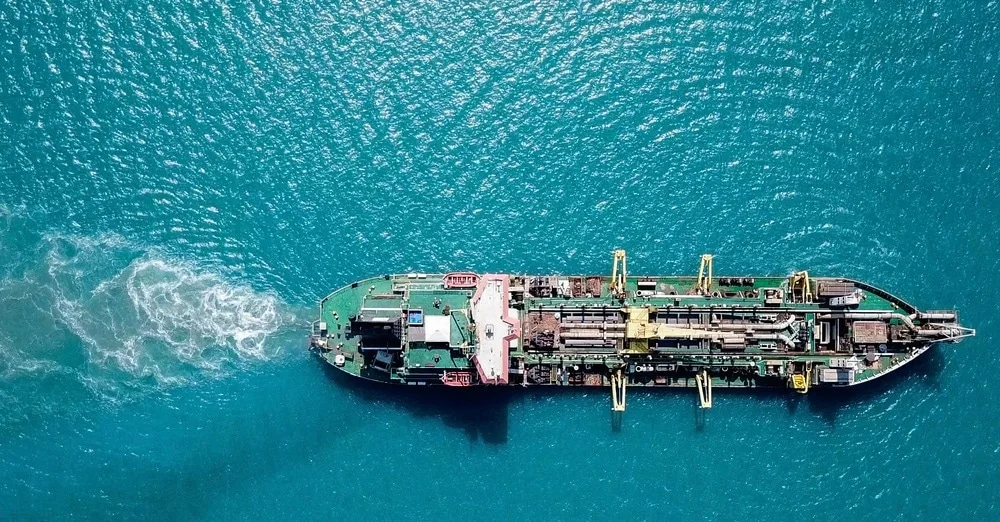Understanding Fluid Mechanics
Dredging is a critical operation in maintaining and expanding waterways, harbors, and ports, ensuring they remain navigable and functional. At the heart of dredging lies the application of fluid mechanics, the branch of physics that deals with the behavior of fluids (liquids and gases) and the forces acting upon them. This article delves into the basic principles of fluid mechanics relevant to dredging and explores how these principles are applied in various dredging techniques and operations.
Fluid mechanics is divided into two main areas: fluid statics, which studies fluids at rest, and fluid dynamics, which studies the behavior of fluids in motion. Both aspects are crucial in dredging operations.
- Fluid Statics (Hydrostatics): This involves the study of fluids at rest. The primary principle here is Pascal’s Law, which states that a change in pressure applied to an enclosed fluid is transmitted undiminished to every point within the fluid. This principle is fundamental for understanding the pressure distribution in the water column, which affects how sediment settles and is crucial for calculating the hydrostatic pressure on submerged equipment.
- Fluid Dynamics: This focuses on fluids in motion. It involves understanding properties such as velocity, pressure, density, and viscosity. Key principles include:
- Continuity Equation: This states that the mass of fluid entering a pipe or channel must equal the mass exiting, assuming steady flow. It’s used to calculate the volumetric flow rate of slurry in suction pipes.
- Bernoulli’s Equation: This principle explains the relationship between velocity, pressure, and elevation in a flowing fluid. It is instrumental in understanding the energy changes occurring in the dredge pumps and suction pipes.
Dredging Equipment and Techniques
- Cutter Suction Dredgers (CSD): These vessels use a rotating cutter head to dislodge sediment from the seabed, which is then sucked up by a dredge pump. Fluid dynamics plays a role in optimizing the cutter head design and ensuring efficient sediment pickup and transport through suction pipes.
- Trailing Suction Hopper Dredgers (TSHD): TSHDs are equipped with one or more suction pipes and a hopper to store dredged material. The fluid mechanics principles help in designing the suction mechanism and understanding the settling behavior of particles in the hopper.
- Grab Dredgers and Clamshells: These devices work by grabbing sediment from the bed and are mainly used for hard-packed materials. Understanding the hydrostatic pressures helps in designing these tools to withstand the pressures at different depths.
Sediment Transport and Slurry Flow
Transporting dredged material efficiently is a critical part of dredging operations. This involves creating a slurry (a mixture of water and sediment) and pumping it through pipes to the disposal site.
- Slurry Properties: The flow behavior of slurry depends on the sediment type, size, concentration, and the fluid’s viscosity and density. The principles of fluid dynamics help predict the pressure drops and flow velocity necessary to keep the sediment in suspension and avoid settling in the pipes.
- Pipeline Design: The design of slurry pipelines involves calculations using the Darcy-Weisbach equation to determine the head loss due to friction and other factors. Pipe diameter, material, and layout are optimized based on these calculations to minimize energy consumption and ensure reliable transport.
Environmental Considerations and Challenges
Fluid mechanics also helps address environmental concerns in dredging:
- Turbidity and Sediment Plumes: Dredging operations often create turbidity and sediment plumes. Understanding the dynamics of particulate matter in water allows for the development of strategies to minimize these impacts, such as adjusting operational speed or using silt curtains.
- Erosion and Deposition: The principles of sediment transport help predict areas of erosion or deposition around dredging sites, guiding the placement of dredged material to beneficial uses, such as beach nourishment or land reclamation.
Advanced Fluid Dynamics in Dredging
With advances in computational fluid dynamics (CFD), it is now possible to simulate complex fluid interactions in dredging operations, leading to better equipment design and more efficient and environmentally friendly dredging strategies.
Conclusion
Understanding basic fluid mechanics is essential for efficient, effective, and environmentally responsible dredging operations. By applying principles from both fluid statics and dynamics, engineers can optimize equipment design, operation, and the handling of dredged materials, minimizing environmental impact while enhancing operational efficiency. As technology advances, the integration of computational models with traditional fluid mechanics continues to push the boundaries of what is possible in dredging operations.
